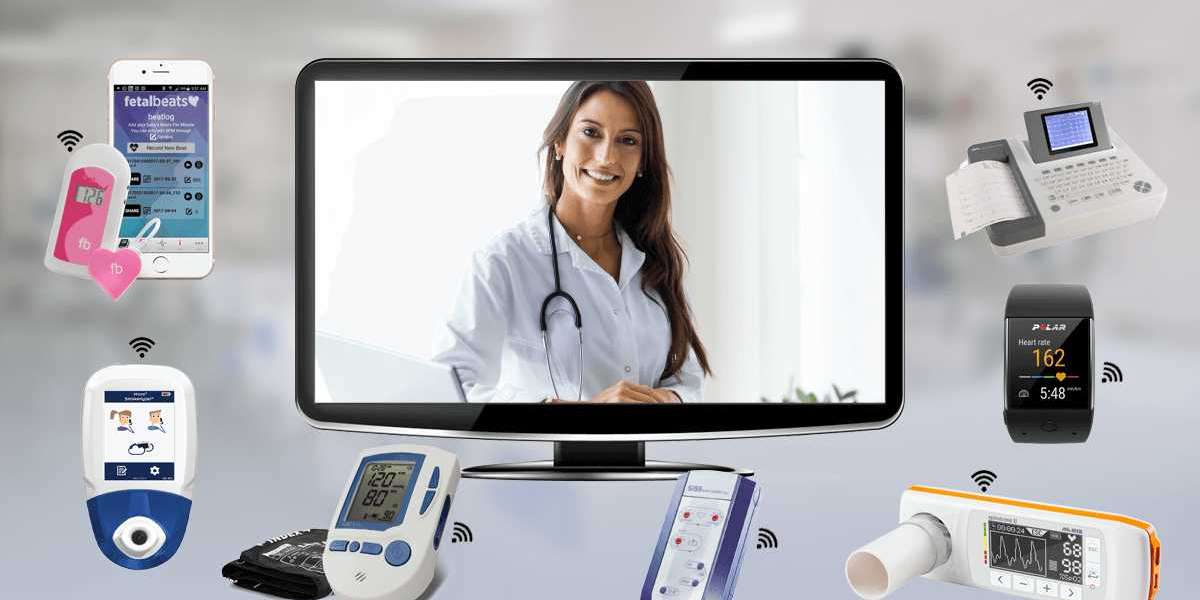Introduction to Remote Patient Monitoring
Remote patient monitoring (RPM) utilizes digital technologies to collect medical and other forms of health data from individuals in one location and electronically transmit that information securely to health care providers in a different location for assessment and recommendations. RPM devices allow patients to stay in their home while their vital signs and other health indicators are monitored by clinicians.
Types of Remote Patient Monitoring Devices
Vital Sign Monitors
One of the most common RPM devices are vital sign monitors that can track patients' heart rate, blood pressure, blood oxygen levels, body temperature and other indicators. These monitors may be wearables that sync wirelessly to a mobile app or home units that transmit data via cellular or wireless networks. Vital sign monitors help clinicians stay on top of patients' conditions without frequent in-person visits.
Glucose Monitors
For patients with diabetes, remote glucose monitors play an important role in RPM. Continuous glucose monitors (CGMs) work much like vital sign monitors by measuring glucose levels via a sensor worn just under the skin. CGMs wirelessly transmit glucose readings automatically to a receiver or mobile app so clinicians and caregivers can monitor trends and intervene as needed.
Scales
When managing certain conditions like congestive heart failure or kidney disease, daily weight fluctuations can provide important insights. Digital scales that automatically upload weight data remotely help clinicians detect early signs of worsening symptoms before they become emergencies. Bluetooth or Wi-Fi enabled scales offer effortless remote monitoring of weight trends over time.
Physiological Monitoring
Beyond vital signs and biometrics, RPM devices can also track a variety of physiological parameters. For example, EKG monitors attached to the chest transmit electrocardiograms to clinicians for detection of arrhythmias. Pulmonary function monitors measure lung capacity, airflow and other respiratory indicators useful for asthma and COPD management. Special sensors even allow for remote monitoring of wound healing progression for patients with chronic wounds or following surgery. The variety of physiological data that can now be collected and transmitted digitally empowers remote clinical oversight of an array of conditions.
Remote Patient Monitoring Benefits for Different Healthcare Stakeholders
Patients
For patients, the greatest advantage of RPM is convenience. No longer do they need to take time off work or arrange transportation for routine doctor visits – vital assessments occur automatically from home. This removes barriers to consistent monitoring that often impact medication adherence and health outcomes. Patients also benefit from reduced anxiety knowing clinicians can intervene promptly if issues arise.
Caregivers
Caregivers of patients managing chronic diseases also benefit from the peace of mind that comes with RPM. They no longer have to worry as much about unexpectedly detected changes or potential emergencies when the monitored individual is by themselves. Digital monitoring frees caregivers from constant in-person checking of things like blood pressure, blood sugar levels or weight changes.
Healthcare Providers
For providers and healthcare organizations, RPM opens opportunities for more proactive, preventative care versus today's traditional reactive model. Remote monitoring allows clinicians to spot early signs of exacerbation or complication before they progress into emergencies. This prevents expensive emergency room visits and hospitalizations that strain budgets. It also enables clinicians to better manage larger patient panels and control visit frequencies based on how individual patients are trending remotely.
Payers
Private and public health insurers are strong proponents of RPM given its potential to reduce costs. Fewer hospitalizations and unnecessary procedures translate directly to significant savings. Some payers are also experimenting with value-based reimbursement models that reward providers for keeping patients as healthy as possible in their homes and communities instead of facilities. The remote monitoring data gives payers confidence that clinical quality is being maintained outside of traditional care settings.
Challenges and Limitations of Remote Patient Monitoring
While Remote Patient Monitoring Devices shows great promise, some practical challenges remain:
Telehealth readiness varies greatly depending on access to stable home internet, computers/mobile devices, and digital literacy of the patient population served. Rural and lower-income communities can face disparities.
Interoperability between the myriad RPM devices and provider health IT systems is limited due to lack of data standards. This compromises the ability to aggregate all patient-generated data in one view for clinicians.
Reimbursement policies have not caught up to address billing and coding questions around remote services like device provisioning, data uploads and clinical interpretation of readings.
Clinical evidence demonstrating improved outcomes and cost savings from different RPM programs and disease states is still emerging. More long-term studies are needed.
Patient and clinical adoption takes time as comfort with digital health tools evolves. User-friendly engagement models are important for consistent patient participation.
Data security and privacy protections must advance to prevent breaches or misuse of sensitive health information collected outside traditional clinical settings.
These challenges are surmountable as the industry matures, but will require ongoing collaboration across stakeholders. Standard-setting, pilot programs, tech innovations and refinement of care models can help realize RPM's full benefits.
Search
Popular Posts
-
 Laser Cleaning Dry Market Size, Industry & Landscape Outlook, Revenue Growth Analysis to 2030
By ajit Chary
Laser Cleaning Dry Market Size, Industry & Landscape Outlook, Revenue Growth Analysis to 2030
By ajit Chary -
 The mobile app Pin Up casino
By Pin Win
The mobile app Pin Up casino
By Pin Win -
 Turkey E-Visa for Australian Citizens
Turkey E-Visa for Australian Citizens
-
 Looking for a new high efficient product for your home or office?
By dlgroupmalta
Looking for a new high efficient product for your home or office?
By dlgroupmalta -
 Shop the Latest Collection of Fans at Malta's Leading Store - Fans Malta
By dlgroupmalta
Shop the Latest Collection of Fans at Malta's Leading Store - Fans Malta
By dlgroupmalta



